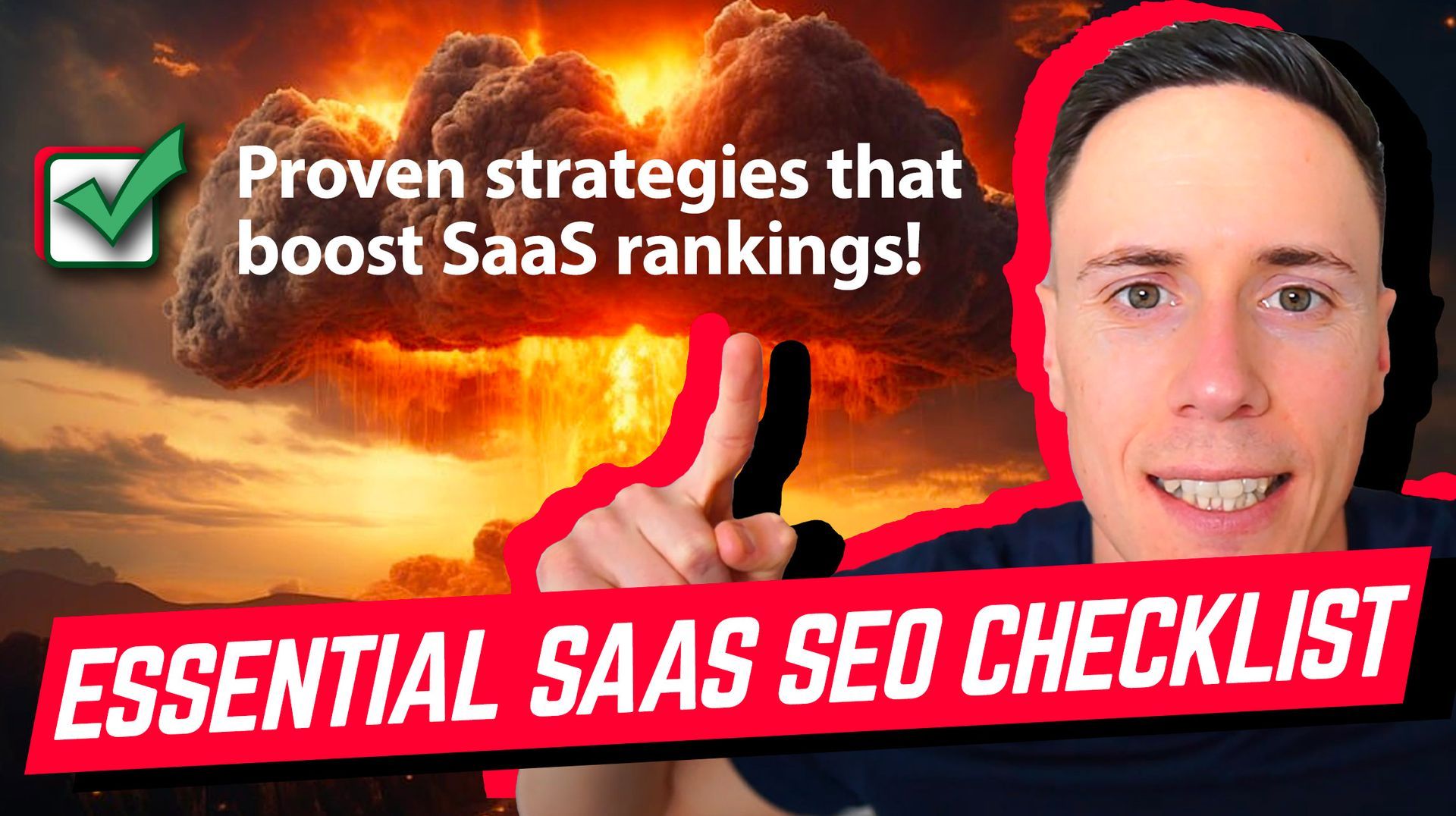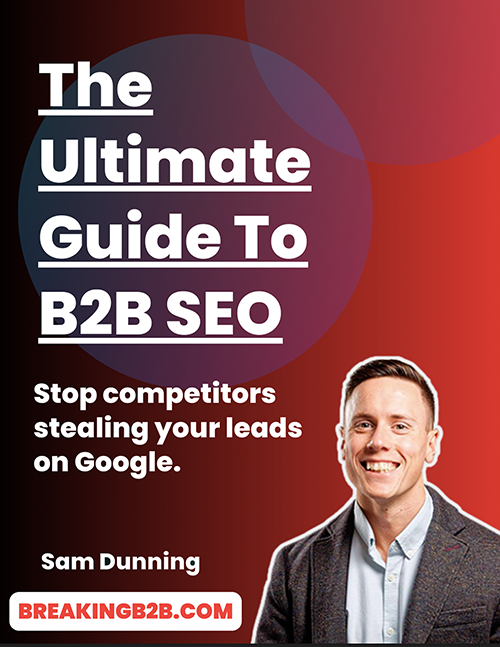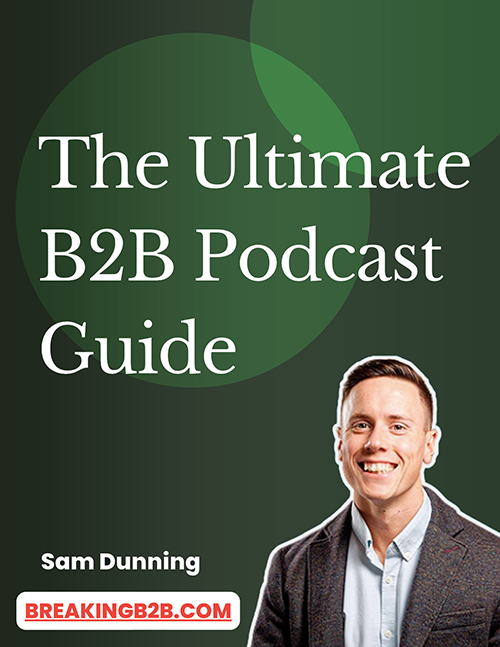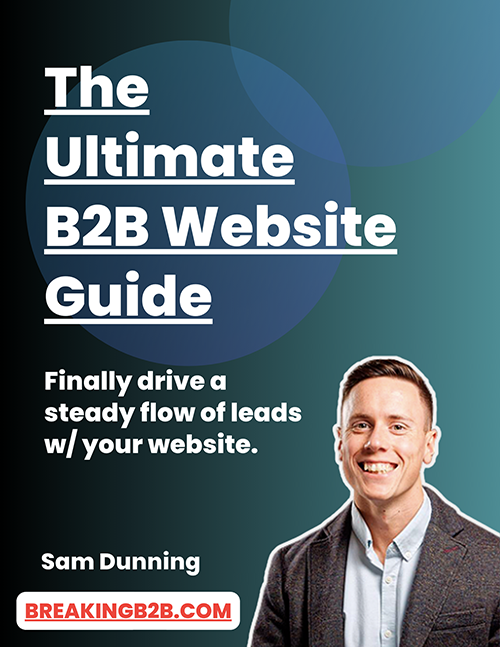Essential SaaS SEO Checklist
Proven Strategies for Explosive Growth
Author: Sam Dunning ✪ Date: June 12th 2024
Today, the Software as a Service (SaaS) world is more competitive than ever, with thousands of companies vying for the attention of potential users. As a result, mastering Search Engine Optimisation (SEO) has become a non-negotiable element of any successful SaaS marketing strategy. In fact, studies show that 93% of online experiences begin with a search engine. This makes it imperative for SaaS companies to ensure their visibility in search engine results. But where do you start? We have put together the ultimate SaaS SEO Checklist.
This guide is designed to demystify the complexities of SEO and provide actionable steps to catapult your SaaS product to the top of search engine rankings. Here’s our comprehensive SaaS SEO checklist:
1. Keyword Research ✓
Keyword research forms the foundation of your SaaS SEO strategy, helping you target terms that boost visibility and drive relevant traffic.When done right, keyword research aligns your content with what your target audience is searching for, ensuring you capture organic search traffic effectively.
Start by identifying a mix of informational, transactional, commercial, and navigational keywords. This allows you to cover various stages of the customer journey, from initial awareness to final purchase.
Tools like Google Keyword Planner, SEMrush, Ubersuggest, and Ahrefs can make your keyword research more efficient. Analyse the search volume, difficulty, and relevance of potential keywords to ensure they match your audience's needs.
Competitor analysis is another critical step. Examining the keywords your competitors rank for can uncover gaps in your strategy and opportunities to outshine them.
You can find more in-depth keyword tips and tricks over at my
Ultimate B2B SaaS SEO Guide.
2. SEO-Friendly URLs ✓
Creating SEO-friendly URLs enhances your site's visibility and user experience. Crafting optimised URLs makes it easier for users and search engines to navigate and understand your content.
Start by guaranteeing your URLs are concise and include relevant keywords. This not only improves your website's ranking but also provides clarity about the page's content.
A clear URL structure is also important. Organise your URLs in a logical manner, reflecting the hierarchy of your website. This helps search engines crawl and index your pages more effectively, leading to better search performance and higher click-through rates.
Avoid using dynamic URLs with parameters like '?id=123'. These can be confusing for search engines and users alike.
Instead, focus on creating static URLs that are easy to read and remember. For example, use 'yourwebsite.com/product-name' instead of 'yourwebsite.com/?p=123'. This approach not only enhances SEO but also user experience.
Implementing these strategies ensures your URLs are optimised, contributing to the overall success of your SaaS SEO efforts. Remember, well-structured, keyword-rich URLs are a crucial part of an effective SEO strategy.
3. Meta Optimisation ✓
After perfecting your SEO-friendly URLs, it's time to focus on meta optimisation to further boost your site's visibility and click-through rates. Meta optimisation is essential for improving how search engines and users perceive your site.
Start with crafting compelling meta tags. These should include primary keywords and be tailored to attract clicks and improve search engine visibility.
Meta descriptions need to be concise, informative, and relevant. They serve as a brief summary of your page's content, persuading users to click through to your site. A well-optimised meta description can greatly impact your organic search performance and increase website traffic.
Title tags are another critical element of on-page SEO. They indicate the topic of your page to search engines and users. Ensure your title tags are clear, include primary keywords, and accurately reflect the content of your page.
This not only helps with SEO but also improves the user experience, making it more likely that visitors will engage with your site and convert.
4. Headings and Hierarchy ✓
Structuring your content with proper headings and hierarchy greatly enhances both SEO performance and user experience. Organising your content with clear, logical headings makes it easier for search engines to understand and index your page.
This means using H1 for your main title, H2 for sub-sections, and H3 for further subdivisions. This structured approach to headings not only boosts your on-page SEO optimisation but also improves the readability of your content, keeping users engaged.
When you use headings effectively, you guide users through your content, making it easier for them to find the information they need. This improved user experience can lead to higher engagement and lower bounce rates, both of which are positive signals to search engines.
Additionally, a well-thought-out hierarchy can help search engines grasp the relative importance of your page's content, directly impacting your SEO rankings.
If your SaaS enterprise could benefit from generating additional high quality leads, I’ve written a whole guide on Mastering Enterprise SaaS SEO > HERE! <
5. Original Content ✓
In today's competitive SaaS environment, creating original content is vital for standing out and capturing your audience's attention. Search engines prioritise unique information, so generating high-quality content is necessary for improving your SEO.
Original content helps you establish credibility, trust, and authority within the SaaS industry, making your brand more appealing to both users and search engines.
Avoiding duplicate content is essential because Google penalises it, which can severely impact your rankings. Focus on crafting unique, informative pieces that offer value to your audience. This enhances your SEO and helps differentiate your company from competitors.
When you provide fresh perspectives and unique insights, you're more likely to attract organic traffic.
Moreover, high-quality content drives user engagement. Engaging, informative articles, white-papers, and case studies capture users' interest and encourage them to spend more time on your site. This increased engagement can lead to higher conversion rates and customer loyalty.
6. Readability ✓
Ensuring your content is easy to read is essential for keeping users engaged and improving your SEO. When users can quickly get your message, they're more likely to stay on your site, which signals to search engines that your content is valuable.
Start by employing proper headings and hierarchy. Clear headings help users and search engines understand the structure of your content, making it easier to navigate.
Next, incorporate relevant links within your content. These links not only provide additional value and context to users but also enhance your content's credibility.
Don't forget to use clear CTAs to guide users through your content, leading them towards desired actions. CTAs should be straightforward and compelling, making the next step obvious.
7. Internal and External Links ✓
As you enhance readability, it's equally important to focus on internal and external links to boost your SaaS site's SEO. Internal linking improves website navigation and guarantees that link equity is distributed effectively across your site.
By strategically placing internal links, you guide users to relevant content, making their experience seamless and boosting your SEO.
External links, particularly from authoritative websites, play a significant role in establishing your site's credibility and trustworthiness. These links act as endorsements, signaling to search engines that your content is valuable. However, not all external links are created equal. Backlink quality is pivotal—one high-quality backlink can outweigh numerous low-quality ones.
Anchor text optimisation is another crucial aspect. Using clear, relevant anchor text for both internal and external links enhances user experience and improves SEO performance. This makes it easier for search engines to understand the context of your links.
Consistent link-building efforts are necessary to maintain and improve your search engine rankings.
Regularly acquiring high-quality backlinks and refining your internal linking strategy will keep your SaaS business ahead in the competitive environment. Remember, effective link strategies aren't just about quantity—they're about quality and relevance.
8. Image Optimisation ✓
You can't ignore image optimisation if you want to boost your SaaS site's SEO and user experience.
Optimising images is vital because it directly impacts your website loading speed and overall user satisfaction. A slow-loading site can deter visitors, negatively affecting your SEO rankings.
Start by resizing your images. Large images can slow down your website, so make sure they're appropriately scaled for web use. Tools like ImageRecycle and TinyPNG can help you compress images without compromising quality. This step guarantees that your website loads quickly, keeping users engaged.
Next, focus on adding descriptive alt text to each image. Alt text not only aids in accessibility for visually impaired users but also helps search engines understand your content better. Include relevant keywords in your alt text to improve your site's visibility in search results.
High-quality, relevant images enhance user experience. Make sure your images are visually appealing and formatted correctly. Proper image optimisation can improve organic search rankings, attracting more traffic to your website.
9. Clear CTAs ✓
After optimising your images, it's vital to focus on crafting clear CTAs to guide your visitors towards taking desired actions on your SaaS site. Clear CTAs are crucial in improving user engagement and boosting your conversion rates.
By designing compelling CTAs, you can notably increase your click-through rates—by as much as 121%.
Here are some key strategies to create effective CTAs:
- Use Action-Oriented Language
Words like 'Get Started,' 'Download Now,' or 'Sign Up Today' encourage immediate action and create urgency. - A/B Testing
Experiment with different CTA texts, colours, and placements to determine which combinations yield the best results. A/B testing can help you optimise for better effectiveness. - Visibility and Placement
Ensure your CTAs are prominently placed and easy to find. They should stand out but still fit seamlessly within your site's design. - Personalisation
Customise CTAs to address your target audience's specific needs and pain points, making them more relevant and enticing.
Incorporating these strategies will enhance user engagement and drive higher conversion rates. Remember, even minor tweaks through A/B testing can lead to notable improvements in your click-through rates and overall user experience.
10. Schema Markup ✓
Schema markup enhances your SaaS site's SEO by assisting search engines in better understanding and displaying your content.
By adding structured data to your web pages, you provide search engines with a clear context of what your content is about. This leads to more accurate and relevant search results, greatly enhancing your site's visibility.
When you implement schema markup, you increase the chances of your site appearing with rich snippets in search engine results.
These rich snippets, which can include additional information like ratings, reviews, or event details, make your listing stand out and can improve your click-through rates. For your SaaS site, this means more potential customers finding and engaging with your content.
Schema markup isn't limited to just one type of content. You can use it for events, products, reviews, FAQs, and more. This versatility makes it an essential tool for thorough SEO optimisation.
11. Mobile-Friendly Design ✓
Over 60% of Google searches are done on mobile devices, so neglecting mobile optimisation can significantly impact your user experience and SEO rankings.
Google's mobile-first indexing prioritises sites that offer seamless mobile experiences, making mobile-friendly design a non-negotiable aspect of your strategy.
To optimise your SaaS website for mobile, focus on these key areas:
- Responsive Design: Ensures your site adapts to various screen sizes, providing a consistent experience across devices.
- Fast Loading Times: Optimise images, use efficient coding, and leverage caching to ensure your pages load quickly on mobile devices.
- Touch-Friendly Navigation: Design buttons and links that are easy to tap, enhancing the user experience for mobile users.
- Readable Text:
Ensure font sizes and styles are legible without zooming, making it easy for users to read your content on smaller screens.
12. Core Web Vitals Monitoring ✓
Monitoring Core Web Vitals is vital for guaranteeing your SaaS website delivers a fast, responsive, and visually stable experience to users. These metrics, which include Largest Contentful Paint (LCP), First Input Delay (FID), and Cumulative Layout Shift (CLS), are essential for evaluating and optimising website performance.
Google uses these metrics as ranking factors, meaning they directly impact your SEO performance and user engagement.
LCP measures how quickly your page's main content loads. To keep users engaged, aim for an LCP of 2.5 seconds or faster. FID evaluates the time it takes for your site to respond to user interactions, such as clicks or taps.
Keeping FID under 100 milliseconds ensures a smooth, interactive experience. Lastly, CLS tracks visual stability, preventing unexpected layout shifts that can frustrate users. A CLS score below 0.1 is ideal.
Monitor these metrics regularly using tools like Google PageSpeed Insights and Search Console. By consistently improving your Core Web Vitals, you'll reduce bounce rates, boost conversions, and enhance overall website performance. This proactive approach benefits user experience and strengthens your search engine rankings.
Incorporating the strategies in this SaaS SEO checklist can greatly enhance your SaaS growth.Did you know that 75% of users never scroll past the first page of search results?Implement these tips and watch your conversions soar.
SaaS SEO Frequently Asked Questions (FAQs)
Ready To Grow Your B2B Company?







